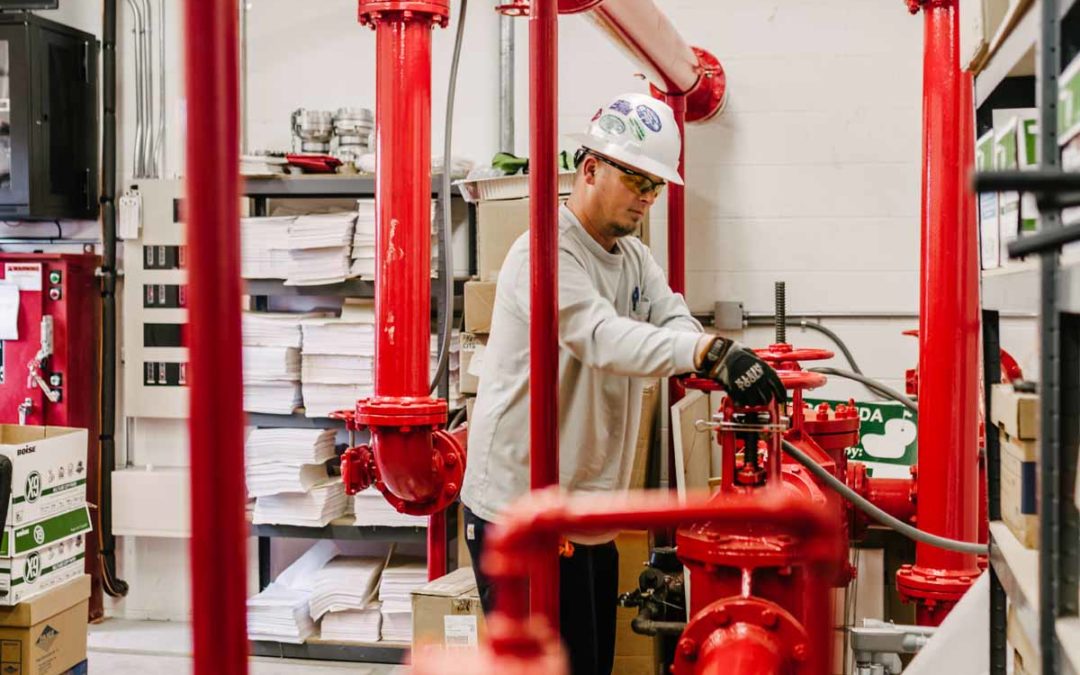Here’s everything you need to know about this essential fire safety system component, starting with what exactly is a fire pump?
What is a Fire Pump?
Fire pumps are used in water-based fire protection systems. They help to distribute water throughout the sprinkler system so every part of the building is protected in case of a fire.
Fire pumps are responsible for increasing the water pressure in order to reach the pressure demand for the building or space they’re used in. For high-rise buildings or expansive spaces like warehouses, if the existing water supply cannot provide adequate pressure to deliver water along all parts of the sprinkler system, a fire pump is required.
How Fire Pumps Work
Fire pumps work by taking the water available from the water supply and increasing the pressure. This stored energy allows water to be distributed along the sprinkler lines throughout the building. Fire pumps are typically powered by electricity, steam, or combustible fuel.
They are connected to the external water supply so levels are not affected by the building’s water use. Some fire pumps can be connected to a water source like a well or reservoir of water for that purpose.
Types of Fire Pumps
Different types of fire pumps may be used to address space and budget constraints. Fire pumps must also not excessively pressurize the water or they could damage the system. There are two main types of fire pumps: positive displacement pumps and centrifugal pumps.
Positive Displacement Fire Pumps use a limited flow of water to create high pressure, pushing the pressurized water through the discharge line in waves. They are less common but sometimes used with water mist and foam systems.
Centrifugal Fire Pumps create pressure by spinning water. Water enters and is rotated by the impeller, where centrifugal force is applied. The pressurized water is then discharged into the sprinkler lines. This type of fire pump is more common and has several different configurations in order to accommodate different spaces or structures. A few of the most common configurations include:
- Horizontal Split-Case Fire Pump
- Vertical Turbine Fire Pump
- In-Line Fire Pump
- End Suction Fire Pump
- Multistage Multiport Fire Pump
Fire Pump Maintenance and Service
If a fire pump must be used to supply your sprinkler system with adequate water pressure, regular inspections and maintenance should be performed to keep this part of the system in optimal condition.
Weekly inspections can be carried out by staff, but dedicated fire safety professionals should tend to monthly, annual, and multi-year inspections and maintenance. According to NFPA 25, fire pumps must be tested on both a monthly and annual basis to ensure that they will perform as designed. These two different tests are referred to as a monthly “churn” test and an annual flow test.
If it’s time for testing or maintenance, call Vanguard Fire & Security Systems today. Our certified fire safety professionals can help make sure your equipment meets all requirements and put you on our regular schedule for maintenance and inspections.


